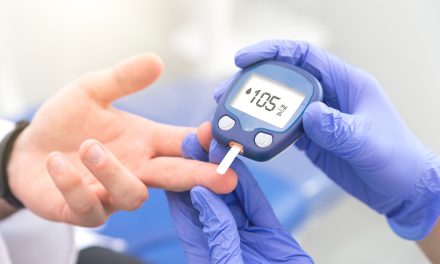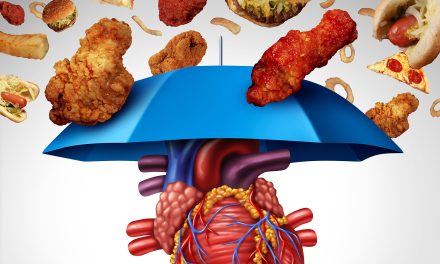Type 2 diabetes is a chronic condition affecting millions of people worldwide. It is primarily characterized by high blood sugar levels caused by insulin resistance or the inability of the body to use insulin effectively. Although there is no absolute cure for this condition, recent advancements in research and medicine suggest that it is possible to achieve long-term remission through a combination of lifestyle changes, medication, and, when necessary, surgical interventions.

A healthy diet, regular physical activity, and maintaining a healthy weight are essential in managing type 2 diabetes. For some individuals, careful management of these factors can even lead to remission. In addition, monitoring blood sugar levels and taking medications as prescribed by a healthcare professional is crucial in preventing complications. Understanding the various factors that contribute to the management of this condition is vital in achieving the best possible outcome for individuals diagnosed with the disease.
Key Takeaways
- Long-term remission of type 2 diabetes may be achieved through lifestyle changes, medication, and surgical interventions when necessary.
- Maintaining a healthy diet and engaging in regular physical activity are crucial aspects of managing the condition.
- Blood sugar monitoring and medication adherence play a significant role in preventing complications and improving overall health.
Understanding Type 2 Diabetes
Type 2 diabetes is a chronic condition that affects the way the body processes glucose (sugar) and regulates blood sugar levels. In this section, we will discuss the role of insulin and glucose in type 2 diabetes, as well as genetic and lifestyle factors that contribute to the development of the condition.
The Role of Insulin and Glucose
Insulin is a hormone produced by the pancreas that helps regulate blood sugar levels by allowing cells to absorb glucose from the bloodstream. In people with type 2 diabetes, the pancreas may not produce enough insulin, or the cells may develop insulin resistance, making it difficult for them to properly absorb glucose. This results in high blood sugar levels, which can lead to various health complications.
Glucose is required by cells for energy production and cellular processes. However, when glucose levels remain chronically elevated in the blood, it can damage blood vessels, nerves, and organs, increasing the risk of heart disease, stroke, kidney damage, and other complications.
Genetic and Lifestyle Factors
There are multiple factors that contribute to the development of type 2 diabetes, including genetic predisposition and lifestyle choices. A family history of diabetes can increase the risk of developing the condition due to shared genes that affect insulin production and sensitivity.
In addition to genetic factors, lifestyle choices play a significant role in developing type 2 diabetes. Some of the key contributors include:
- Diet: Consuming a diet high in sugar and unhealthy fats can increase the risk of developing type 2 diabetes.
- Physical activity: Leading a sedentary lifestyle with low levels of physical activity can affect insulin sensitivity and increase the risk of diabetes.
- Obesity: Excess body weight, especially around the abdomen, is a major risk factor for type 2 diabetes, as it contributes to insulin resistance.
- Stress: Chronic stress affects hormone levels, which can negatively impact blood sugar regulation.
—
It is essential to understand the underlying factors behind type 2 diabetes in order to develop effective prevention and treatment strategies. By addressing both genetic and lifestyle factors, individuals can take steps to reduce their risk and manage the condition effectively if diagnosed.
Dietary Management
Creating a Diabetes Meal Plan
A well-planned meal plan is essential for effectively managing type 2 diabetes. It should focus on consuming nutrient-dense foods, maintaining a healthy weight, and balancing carbohydrates, proteins, and fats. A typical diabetes meal plan should consist of lean proteins, low-fat dairy, whole grains, fruits, vegetables, and healthy fats. For example, non-starchy vegetables like spinach, broccoli, and bell peppers are great choices for a diabetes meal plan due to their low carbohydrate content while providing necessary nutrients.
The Importance of Whole Grains and Fiber
Incorporating whole grains and fiber into a diabetes meal plan can help regulate blood sugar levels and support weight loss. Whole grains, such as brown rice, quinoa, and whole wheat bread, contain complex carbohydrates, which take longer to break down and have a more gradual effect on blood sugar levels. Additionally, fiber-rich foods like beans, lentils, and oats can help to slow digestion and control blood sugar spikes.
Here are some whole grain and fiber-rich food options:
- Whole grains: Brown rice, quinoa, barley, bulgur, and whole wheat pasta.
- Fiber-rich fruits: Berries, apples, and pears (with skin).
- Fiber-rich vegetables: Leafy greens, broccoli, and Brussels sprouts.
- Legumes: Lentils, chickpeas, and black beans.
Managing Carbohydrates and Calories
Carbohydrates and calorie intake play a crucial role in blood sugar management for people with type 2 diabetes. Ideally, individuals should aim to consume a balance of carbohydrates, proteins, and healthy fats at each meal, which can help maintain a stable blood sugar level throughout the day. Tracking carbohydrate intake, commonly known as carb counting, can provide a useful tool in meal planning and portion control.
Calorie intake should also be monitored to support weight loss and reduce the risk of further complications associated with diabetes. Achieving and maintaining a healthy weight can have a significant impact on blood sugar management and may even lead to reversing type 2 diabetes in some cases.
Physical Activity and Weight Management
Exercise and Blood Sugar Control
Regular exercise plays a crucial role in managing blood sugar levels for individuals with type 2 diabetes. Engaging in consistent physical activity helps the body use insulin more efficiently and effectively. Research has shown that a routine of aerobic and resistance exercises can lead to lower cardiovascular and overall mortality risk.
When starting an exercise routine, it is essential to monitor blood sugar levels before, during, and after exercise. This precaution allows individuals to understand how different workouts affect their glucose levels, and adjust their exercise plan accordingly. It may also be beneficial to have some carbohydrates on hand in case blood sugar levels drop too low during physical activity.
The Impact of Weight on Diabetes
Excess weight, particularly in the form of obesity, significantly increases the risk of developing type 2 diabetes. Studies have found that weight management can help delay the progression from prediabetes to type 2 diabetes, as well as improve glycemic control in those already diagnosed with the condition.
To effectively manage weight, individuals with type 2 diabetes should focus on a combination of healthy eating and regular exercise. A sustained and modest weight loss can lead to improved blood sugar control and reduce the need for glucose-lowering medications. One way to track weight loss progress is by measuring body mass index (BMI), which takes into account an individual’s height and weight.
In conclusion, incorporating regular exercise and maintaining a healthy weight are essential components in managing and potentially reversing type 2 diabetes. Combined with a balanced diet and proper medication management, individuals with this condition can significantly improve their overall health and quality of life.
Medication and Blood Sugar Monitoring
Navigating Diabetes Medications
In managing type 2 diabetes, medication plays a crucial role alongside lifestyle changes. The most common initial medication prescribed is Metformin, which helps to lower blood sugar levels by improving insulin sensitivity and decreasing glucose production in the liver. However, a healthcare professional may adjust or prescribe additional medications based on an individual’s needs.
It is essential to work closely with your healthcare professional to determine the most effective medication regimen. Factors that may influence the choice of medication include:
- Blood sugar levels: Regular monitoring of blood sugar levels helps your healthcare professional assess the effectiveness of your current medication and recommend any needed adjustments.
- A1C: This blood test indicates your average blood sugar level for the past two to three months. The results play a significant role in determining the appropriate medication to manage your diabetes.
- Blood pressure: Diabetes medications can also help to manage comorbidities like high blood pressure. Maintaining healthy blood pressure is vital for people with type 2 diabetes.
Self-monitoring and Professional Support
Monitoring blood sugar levels is an essential aspect of managing type 2 diabetes. This involves using a blood sugar meter to test a drop of blood, usually from a fingertip or an alternate site like the forearm or palm. Self-monitoring helps to:
- Identify high or low blood sugar levels
- Determine the effectiveness of your medication
- Make informed decisions about meal planning and physical activity
Regularly discuss your self-monitoring results with your healthcare professional, as they can help assess your progress and recommend adjustments to your medication, diet, or exercise regimen.
In addition to self-monitoring glucose levels, it is crucial to attend regular medical appointments. Your healthcare professional may perform additional tests, such as A1C tests, to gain a comprehensive understanding of your blood sugar control. These appointments also provide an opportunity to address any concerns and receive ongoing support in managing your type 2 diabetes.
Advances in Diabetes Treatment

Stem Cell Research and Future Therapies
In recent years, stem cell research has emerged as a promising avenue for finding permanent solutions to Type 2 diabetes. Scientists are exploring the potential of using stem cells to generate insulin-producing cells that could replace damaged pancreatic beta cells. Such advancements may one day lead to a cure for this chronic condition.
Several novel treatment options are under investigation in various stages of clinical trials. These include:
- Glinides are a class of drugs that stimulate the pancreas to produce more insulin, helping maintain normal blood sugar levels.
- Thiazolidinediones: Medications that improve insulin sensitivity in muscle and fat tissues and reduce glucose production in the liver.
- DPP-4 inhibitors: These drugs slow down the breakdown of GLP-1, a hormone that helps lower blood sugar levels.
- GLP-1 agonists: Similar to DPP-4 inhibitors, these medications also work on the GLP-1 hormone but by mimicking its action, helping the body regulate blood sugar levels more effectively.
These potential treatments need to undergo rigorous testing and receive FDA approval before becoming widely available to patients.
Innovations in Diabetes Care
Aside from pharmacological advancements, innovations in diabetes care and management are improving the lives of people with Type 2 diabetes. For example, the development of islet chips enables researchers to study the functions and interactions of cells in pancreatic islets, including insulin-producing beta cells. Understanding these cells could lead to new treatment strategies for Type 1 diabetes.
Furthermore, scientists are investigating the potential role of the liver in Type 2 diabetes prevention and treatment. Some believe that uncovering the liver’s influence on blood sugar regulation could lead to new approaches for managing the disease .
These advances demonstrate the ongoing efforts of researchers and healthcare professionals to develop innovative solutions for Type 2 diabetes focused on prevention, improved management, and ultimately, permanent cures.
Surgical Interventions

Bariatric Surgery and Diabetes Remission
Bariatric surgery has become a popular and effective treatment option for individuals suffering from type 2 diabetes. It provides an alternative to traditional methods such as medication, diet, and exercise when these techniques are not sufficient to achieve the desired level of blood sugar control.
One of the main benefits of bariatric surgery is its ability to promote diabetes remission. In many cases, patients experience a significant decrease in symptoms and achieve stable blood sugar levels without needing medication. There are different types of bariatric surgery, such as gastric bypass, which alters the digestive system to promote weight loss and improve blood sugar control.
Gastric bypass surgery involves dividing the stomach to create a small pouch in the upper portion and connecting it directly to the small intestine. This reduces the amount of food an individual can consume and limits the absorption of nutrients, resulting in weight loss and improved blood glucose levels.
The table below displays an overview of different bariatric surgery options along with their potential impact on type 2 diabetes:
| Bariatric Surgery Type | Type 2 Diabetes Remission or Improvement | Impact on Weight Loss |
|---|---|---|
| Gastric Bypass | High | Significant |
| Sleeve Gastrectomy | Moderate to High | Significant |
| Adjustable Gastric Banding | Moderate | Moderate |
| Biliopancreatic Diversion (with or without Duodenal Switch) | High | Significant |
It is essential to understand that bariatric surgery’s effectiveness in achieving diabetes remission varies depending on the individual’s specific situation, including factors such as age, duration of diabetes, and body mass index (BMI). It is always advised to consult with a medical professional before considering bariatric surgery as a treatment option for type 2 diabetes.
While bariatric surgery has proven effective in causing significant weight loss and improving type 2 diabetes symptoms, it is not without potential risks or side effects. These could include short-term complications, such as mortality at 0.1-0.3%, procedure-related complications occurring in 2-4% of cases, and long-term risks, such as malnutrition or gastrointestinal issues. As with any surgical procedure, careful consideration and thorough consultation with a healthcare professional are paramount before proceeding with bariatric surgery as a treatment option for type 2 diabetes.
Lifestyle Changes for Remission

The Direct Approach to Reversing Diabetes
One of the primary ways to reverse type 2 diabetes and achieve remission is by making significant lifestyle changes. A vital component of these changes is adopting a healthy diet, which involves consuming a low-calorie diet rich in vegetables, lean protein, and whole grains. By reducing caloric intake and choosing nutrient-dense foods, individuals can lose weight, which is often a significant factor in improving blood sugar control and reducing insulin resistance.
In addition to diet, regular physical activity can also contribute to reversing diabetes. Exercise has been shown to improve insulin sensitivity and help regulate blood sugar levels. Aerobic and resistance training is recommended, aiming for at least 150 minutes per week.
Importance of Comprehensive Lifestyle Overhaul
While following a low-calorie diet and increasing exercise may be effective in achieving remission for some individuals, a more comprehensive lifestyle overhaul is necessary for long-term success. This includes addressing other factors contributing to metabolic health, such as stress management, adequate sleep, and quitting smoking.
A summary of the fundamental lifestyle changes to consider for diabetes remission are:
- Adopting a low-calorie diet with an emphasis on nutrient-dense foods
- Engaging in regular physical activity, including both aerobic and resistance training
- Managing stress through mindfulness practices or therapy
- Ensuring adequate sleep and improving sleep hygiene
- Quitting smoking and avoiding excessive alcohol consumption
Making these changes may not guarantee permanent remission, but they can significantly improve overall health and reduce the risk of complications associated with type 2 diabetes. For individuals looking to achieve diabetes remission, a comprehensive approach that addresses multiple aspects of lifestyle is essential for both short-term progress and long-term success.
Managing Diabetes Complications

Heart and Kidney Disease
Type 2 diabetes increases the risk of heart and kidney diseases, which are among the most severe complications associated with the condition. Keeping blood sugar levels in check is crucial to prevent these complications. Strategies to prevent heart disease include maintaining a healthy weight, engaging in regular physical activity, and eating a well-balanced diet.
Kidney failure is another common complication of diabetes. To minimize this risk, it is essential to manage diabetes effectively through proper glucose control, blood pressure regulation, and the use of medications. Moreover, regular checkups for kidney function are necessary to monitor potential issues in individuals dealing with type 2 diabetes.
Preventing Long-Term Complications
- Control Blood Sugar Levels – Consistent monitoring and maintenance of blood sugar levels are crucial to prevent long-term complications such as hyperglycemia and organ damage.
- Monitor Blood Pressure – High blood pressure often accompanies type 2 diabetes and can worsen complications like heart disease and stroke. Regular monitoring and appropriate management help minimize these risks.
- Maintain a Healthy Lifestyle – A balanced diet, regular exercise, and weight management are essential factors in preventing the progression of diabetes-related complications.
- Regular Screenings – Regular medical check-ups help detect diabetes-related complications early, increasing the chances of successful treatment.
- Medication Adherence – Taking prescribed medications consistently and correctly is vital to managing complications like heart disease and high blood pressure effectively.
By implementing these strategies, individuals can proactively manage the complications of type 2 diabetes and improve their overall health.
Support Systems and Diabetes Management

Role of Healthcare Professionals
A crucial aspect of managing type 2 diabetes is having a solid support system that includes healthcare professionals. The multidisciplinary team comprises doctors, diabetes nurses, dietitians, and pharmacists. They work together to provide personalized care and guidance. In particular, they assist with:
- Monitoring blood sugar levels
- Developing a healthy diet plan
- Recommending appropriate exercise routines
- Selecting and adjusting medications
Having regular consultations with the healthcare team ensures that your diabetes management plan remains up-to-date and tailored to your individual needs.
Community and Online Resources
In addition to professional help, individuals with type 2 diabetes can benefit from various community and online resources. Some of these include:
- Support groups: Local and online support groups can be invaluable in connecting people with similar experiences and providing encouragement. Sharing personal stories and advice within these groups helps individuals cope with challenges and manage their condition more effectively.
- Educational workshops: Attending workshops addressing diet, exercise, and other critical aspects of diabetes management can lead to acquiring new skills and knowledge, which are essential for maintaining recommended blood sugar levels.
- Online forums and social media: Platforms such as diabetes-focused forums and social media channels help keep people informed about the latest advances and treatments, as well as facilitate discussions with fellow diabetes sufferers.
Leveraging these resources can significantly improve the overall diabetes management experience. Engaging with various sources of information and support empowers individuals to make informed decisions about their condition, ultimately contributing to a healthier and happier life.
Prevention and Education

Preventing Type 2 Diabetes in At-Risk Populations
Preventing type 2 diabetes involves adopting a healthy lifestyle for individuals who are at increased risk due to factors such as obesity, overweight, or a family history of diabetes. One way to achieve this is through weight management, focusing on losing excess weight to reduce blood sugar levels from the diabetic to the nondiabetic range.
It is essential to follow a healthy diet that includes non-starchy vegetables and low-calorie options. A balanced diet with a moderate caloric intake might be combined with regular physical activity to achieve and maintain a healthy weight. The Centers for Disease Control and Prevention recommends at least 150 minutes of moderate-intensity aerobic exercise per week and muscle-strengthening activities two or more days a week.
Monitoring and maintaining healthy blood pressure levels is another way to reduce the risk of type 2 diabetes. Eating less sodium, reducing alcohol consumption, and quitting smoking can help achieve this goal.
Diabetes Education and Control
Educating oneself about type 2 diabetes is crucial for both prevention and control. Gaining a better understanding of diabetes, blood sugar management, and appropriate lifestyle changes can help minimize the complications associated with the disease. The Mayo Clinic emphasizes the importance of being aware of one’s personal risk factors and taking small but consistent steps toward a healthier lifestyle.
In addition to lifestyle changes, individuals diagnosed with type 2 diabetes should engage in regular blood glucose monitoring and seek medical advice on the best treatment plan. This may include oral medications, insulin therapy, or, in some cases, both. Regular healthcare provider visits become crucial for maintaining proper diabetes management and ensuring that necessary adjustments to the treatment plan are made accordingly.
In conclusion, prevention and education play critical roles in managing type 2 diabetes and minimizing its complications. By staying informed and making healthy lifestyle choices, individuals can effectively reduce their risk of developing the disease or maintain better control over their condition.
Frequently Asked Questions

What are the latest advancements in treating type 2 diabetes?
There have been multiple advancements in the treatment of type 2 diabetes. One promising development is the use of GLP-1 receptor agonists, which can help improve blood sugar control, contribute to weight loss, and potentially reduce the risk of cardiovascular events.
What lifestyle changes are recommended for reversing type 2 diabetes?
Lifestyle changes are crucial in managing and potentially reversing type 2 diabetes. Key steps include regular exercise, maintaining a healthy weight, following a balanced diet, and monitoring blood sugar levels. Sometimes, these changes may help individuals achieve normal blood sugar levels without medication.
Can losing weight significantly improve type 2 diabetes, and how much is required?
Weight loss can have a significant impact on type 2 diabetes management. For some, losing just 5-10% of their body weight can improve blood sugar control, reduce the need for medications, and lower the risk of complications. The amount of weight loss required depends on an individual’s unique circumstances and should be discussed with a healthcare provider.
What dietary choices can help in managing and potentially reversing type 2 diabetes?
A diet rich in whole foods, lean proteins, healthy fats, and low in refined carbohydrates and sugars can help manage blood sugar levels. Eating fruits, vegetables, whole grains, legumes, and lean meats is essential. A dietitian or healthcare provider can offer personalized recommendations tailored to individual needs. For some, making these dietary changes may lead to type 2 diabetes remission.
Is it possible for someone with type 2 diabetes to achieve normal blood sugar levels without medication?
In some cases, individuals can maintain normal blood sugar levels without medication by making lifestyle changes such as adopting a healthy diet, exercising regularly, and maintaining a healthy weight. However, it’s important to emphasize that each person’s situation is different, and what works for one person may not be suitable for another. Type 2 diabetes management should always be done under the guidance of a healthcare provider.
How quickly can one expect to see improvements in type 2 diabetes symptoms with proper treatment and lifestyle adjustments?
The speed at which symptoms improve varies depending on factors such as the severity of the condition, adherence to treatment and lifestyle changes, and individual response. Some people may notice improvements in blood sugar levels within weeks, while others may take several months or longer. Monitoring blood sugar levels and working closely with a healthcare provider can help ensure optimal progress and individualized care.
















